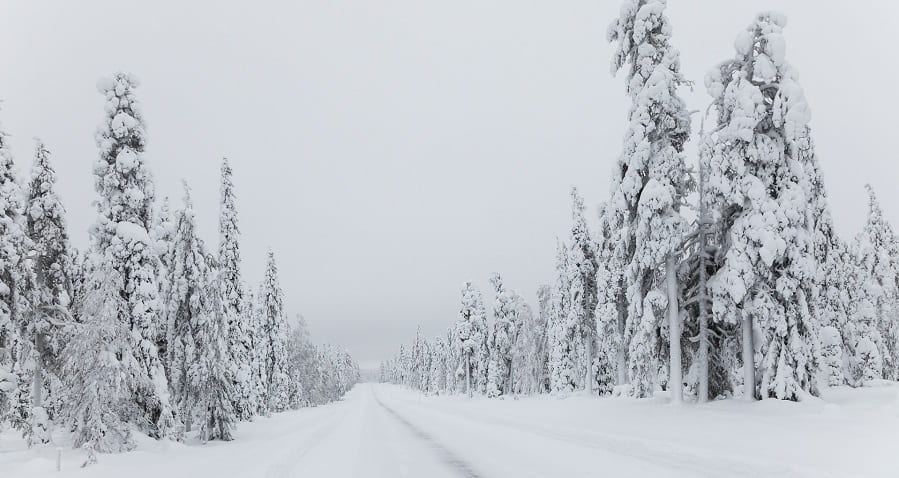Heavy snow, ice storms, and extreme cold can cause severe property damage and put human and animal lives at risk. Accurate predicting of winter storms can help people prepare by making sure they have adequate fuel, food, and other supplies on hand, but an unexpected change in wind direction can result in major snow accumulation in a localized region. In New York, this is often referred to as lake-effect snow because it generally involves geographic areas near Lake Erie or Lake Ontario.
Key terms:
- Winter Storm Outlook– storm conditions are possible in the next 2-5 days.
- Winter Storm Watch– storm conditions are possible within the next 36-48 hours.
- Winter Weather Advisory– weather conditions may be hazardous.
- Winter Storm Warning– severe winter conditions have begun or will begin within 24 hours.
Preparedness and Safety
Disaster Resource Center – United States Department of Agriculture (USDA)
East Coast Winter Storms climatological and forecasting data – Northeast Regional Climate Center
Electrical Power Outages Safety tips to help you prepare for and cope with the sudden loss of power by the Centers for Disease Control and Prevention (CDC)
Preventing Carbon Monoxide Poisoning guidance from the Centers for Disease Control and Prevention (CDC)
Readiness Checklist: Preparing for the Thaw (PDF)– By Keith G. Tidball, PhD, Extension Disaster Education Network
Safe Operation of Emergency Generators (PDF) – recommendations for safe residential and farm use of generators during power outage situations by Eric Hallman and Richard Peterson, Cornell Agricultural Health and Safety Program
Severe weather fire safety outreach materials from the U.S. Fire Administration
Winter Safety guidance from National Weather Service
Winter Safety Guide (PDF) – CCE Warren County and the Warren County Disaster Preparedness Office
Winter Storm Safety guidance from the Red Cross
Winter Weather safety and preparation resources from the Centers for Disease Control and Prevention
Preparedness and Safety
Disaster Resource Center – United States Department of Agriculture (USDA)
East Coast Winter Storms climatological and forecasting data – Northeast Regional Climate Center
Electrical Power Outages Safety tips to help you prepare for and cope with the sudden loss of power by the Centers for Disease Control and Prevention (CDC)
Preventing Carbon Monoxide Poisoning guidance from the Centers for Disease Control and Prevention (CDC)
Readiness Checklist: Preparing for the Thaw (PDF)– By Keith G. Tidball, PhD, Extension Disaster Education Network
Safe Operation of Emergency Generators (PDF) – recommendations for safe residential and farm use of generators during power outage situations by Eric Hallman and Richard Peterson, Cornell Agricultural Health and Safety Program
Severe weather fire safety outreach materials from the U.S. Fire Administration
Winter Safety guidance from National Weather Service
Winter Safety Guide (PDF) – CCE Warren County and the Warren County Disaster Preparedness Office
Winter Storm Safety guidance from the Red Cross
Winter Weather safety and preparation resources from the Centers for Disease Control and Prevention
Barn and House Roofs
Snow loading, the downward force exerted on structures by the weight of accumulated snow, may result in damage to roofs or the actual collapse of the roof itself. In addition to snow accumulation there are other conditions that may contribute to snow loading problems and the potential for roof collapse:
- Adding insulation to the roof without ventilation may cause condensation & eventual rotting of the rafters or deck
- Re-roofing with three or more layers of shingles
- Not correcting observable symptoms of structural problems
Additional Recommended Resources:
- Cues and Cures of Attic Condensation and Roof Ice Damming Problems (PDF) by Department of Design & Environmental Analysis, Cornell University
- Dos and Don’ts of Barn Snow Removal (PDF) by Curt Gooch and Sam Steinberg, Cornell University
- Farmstead Recovery Checklist: Snow Load & Barn Collapse (PDF) by NYS EDEN
- Heavy Snow Loads (PDF) by Curt A. Gooch, Cornell University
Recovery
Tree Damage
- Conducting a street tree inventory and community forestry resources – by Urban Horticulture Institute, Cornell University
- Find a certified tree arborist– International Society of Arboriculture
- Operating a Chain Saw Safely – University of Missouri Extension
- Storm recovery– National Arbor Day Foundation
- The Tree Emergency Manual for Public Officials – Community Forest Education Project, Cornell Cooperative Extension Monroe County
- Tree Emergency Plan Worksheet (PDF) – For Urban and Community Foresters, Community Leaders, Public Works and Parks Departments, Planners, Councils, and other Public Officials
Forests and Maple Sap Production
University of New Hampshire (1998 Ice Storm):
Forest Manager Resources: USDA Forest Service Northeastern Research Station
Updates
Update on Snow Load Damage – Declarations Status and Other Resources
Since the major December snowstorm in the Southern Tier, Cornell Cooperative Extension, in...



